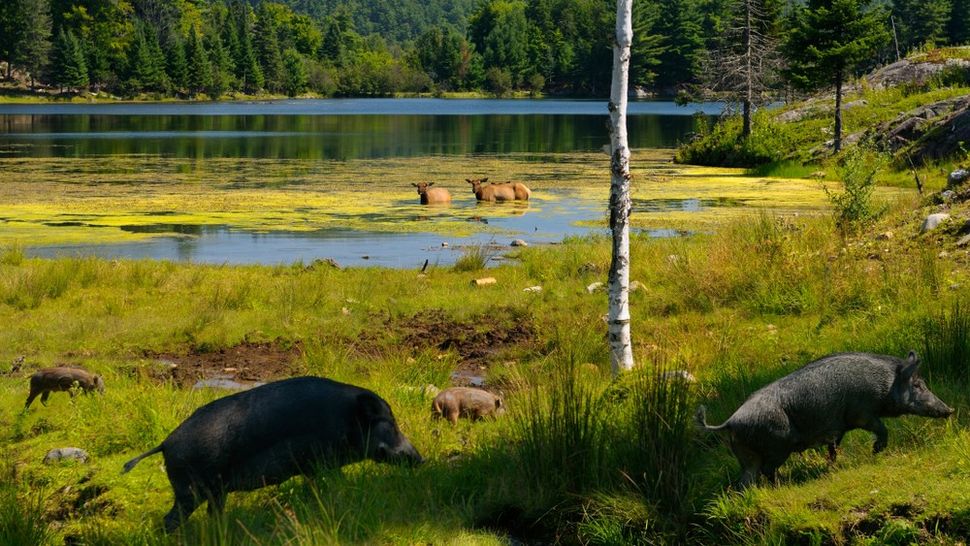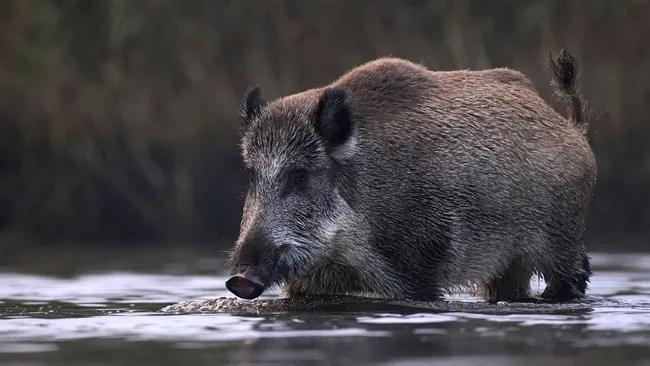A new study has raised concerns about the potential invasion of “super pigs” from Canada into the northern United States, painting a worrisome picture of ecological disruption and agricultural damage.
The feral pig population in Canada comprises a mix of domestic swine and wild boar, with some hybrids of the two, as detailed by the Canadian Council on Invasive Species. Originally introduced for meat and recreational shooting in the late 1980s, these animals unexpectedly thrived despite harsh winter conditions, earning them the moniker “super pigs.”
According to Ryan Brook, a professor at the University of Saskatchewan and co-author of the study, these super pigs possess high reproductive rates, mobility, and resilience to cold weather. Their potential migration southward poses a significant threat to regions such as North and South Dakota, Montana, and Minnesota, which have thus far remained feral pig-free due to intensive control efforts.
While the southern U.S. already grapples with a sizable feral hog population, estimated at around 6.9 million, the north could face unprecedented challenges if invaded by super pigs. Their destructive foraging behavior, which includes rooting and tearing up the ground, poses a threat to agricultural production and native ecosystems alike. These omnivorous creatures consume a wide range of prey, from small mammals to adult deer, further exacerbating concerns about their impact on local biodiversity.
To understand the potential extent of their spread, researchers fitted feral pigs with GPS collars to track their movements over a 13-month period. Their findings revealed a preference for habitats characterized by wetlands, deciduous forests, and crops, which provide both food and cover. Areas near bodies of water, such as Fort Peck Lake in Montana and Devils Lake in North Dakota, were identified as potential

hotspots for expansion.
In light of these findings, the researchers advocate for proactive measures to mitigate the risk of a super pig invasion. Suggestions include planting shorter crops to reduce cover and implementing barriers like fences or traps to limit access to preferred habitats. Urgent action is needed to prevent the unchecked expansion of wild pigs, which could have far-reaching consequences for both Canada and the United States.
Brook emphasized the importance of collaboration between neighboring countries to address this pressing issue. Failure to act swiftly could result in dire consequences for ecosystems and agricultural communities on both sides of the border. As the threat of super pigs looms large, proactive and coordinated efforts are essential to safeguarding the region’s biodiversity and economic interests.
